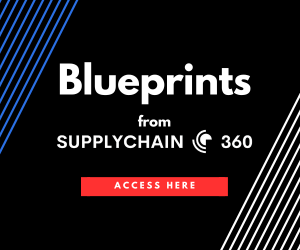Amid ongoing trade volatility and rapid regulatory shifts, business leaders are increasingly turning to Agentic AI to stabilize their supply chains. Unlike basic automation or generative AI, these systems act with defined strategic intent – negotiating contracts, reallocating spend, and surfacing supplier alternatives in real time. The result isn’t just greater efficiency, but clearer operational decision-making when it matters most.
AI That Negotiates and Adjusts the Bottom Line
Shifting tariffs, geopolitical flare-ups, and sudden export restrictions can upend supplier agreements and pricing structures overnight. In this environment, organizations no longer have the luxury of waiting days, or even hours, for teams to assess risk and respond.
This is where agentic AI diverges from traditional tools. These systems don’t simply automate steps, they take action. Agentic AI can scan thousands of SKUs, suppliers, and contract terms in real time to assess exposure and propose immediate action. More importantly, they can act – triggering renegotiations, reallocating spend, or proposing compliant alternatives – without breaching guardrails set by finance or legal teams.
Johnson & Johnson, for example, has implemented AI-driven procurement platforms that help manage supplier risk across its global network. During the early days of the COVID-19 pandemic, this capability helped the company reroute sourcing for critical medical components within hours, not weeks, by rapidly identifying alternative vendors with compliant regulatory profiles.
One of the most strategic uses of this capability is in offsetting financial shocks. For instance, when tariffs are suddenly applied to critical imports, agentic AI can identify savings across the rest of the supplier base that may have been previously overlooked. These margin gains can be redirected to cushion the blow, buying time to restructure sourcing strategies without immediate disruption. This isn’t about cost-cutting in the abstract, it’s financial agility, embedded directly into the procurement function.
Real-Time Governance, Not Rogue Automation
What sets agentic AI apart isn’t just speed, it’s alignment. Unlike generative AI, which can produce erratic or unvetted results, agentic systems are built to operate within defined parameters. That means no unauthorized supplier interactions, no off-contract commitments, and no unexpected liabilities.
This structured intelligence is particularly valuable for global enterprises managing complex vendor ecosystems. With tens or hundreds of thousands of suppliers, manual monitoring and response is unscalable. But AI with a clearly defined mission – reduce risk, protect margins, stay compliant – can act autonomously across distributed operations, providing procurement leaders with both visibility and control.
At Siemens, the company has begun rolling out agentic AI capabilities within its procurement function, specifically to handle tail-spend and mid-tier supplier negotiations. Rather than relying on human buyers to manually revisit contracts, the AI system surfaces renegotiation opportunities based on changing material costs and executes these within defined rules.
Crucially, agentic AI can be deployed on top of existing procurement infrastructure. Organizations don’t need to rip out legacy systems; the AI layer can tap into those platforms, converting what were once passive databases into engines of real-time insight and action. That pragmatic integration means companies can move quickly, without a massive transformation roadmap or delayed ROI.
A Measured Shift Toward Strategic Stability
As trade dynamics grow more unpredictable and supplier ecosystems become increasingly complex, procurement’s role is shifting from transactional execution to strategic stabilization. Agentic AI supports this transition by introducing a structured form of intelligence that scales with global operations while remaining aligned to governance frameworks. It does not eliminate uncertainty, but it helps organizations navigate it more deliberately – linking sourcing decisions more tightly to financial resilience and operational continuity.








